Dental Implants: What to Expect, Procedure & FAQs

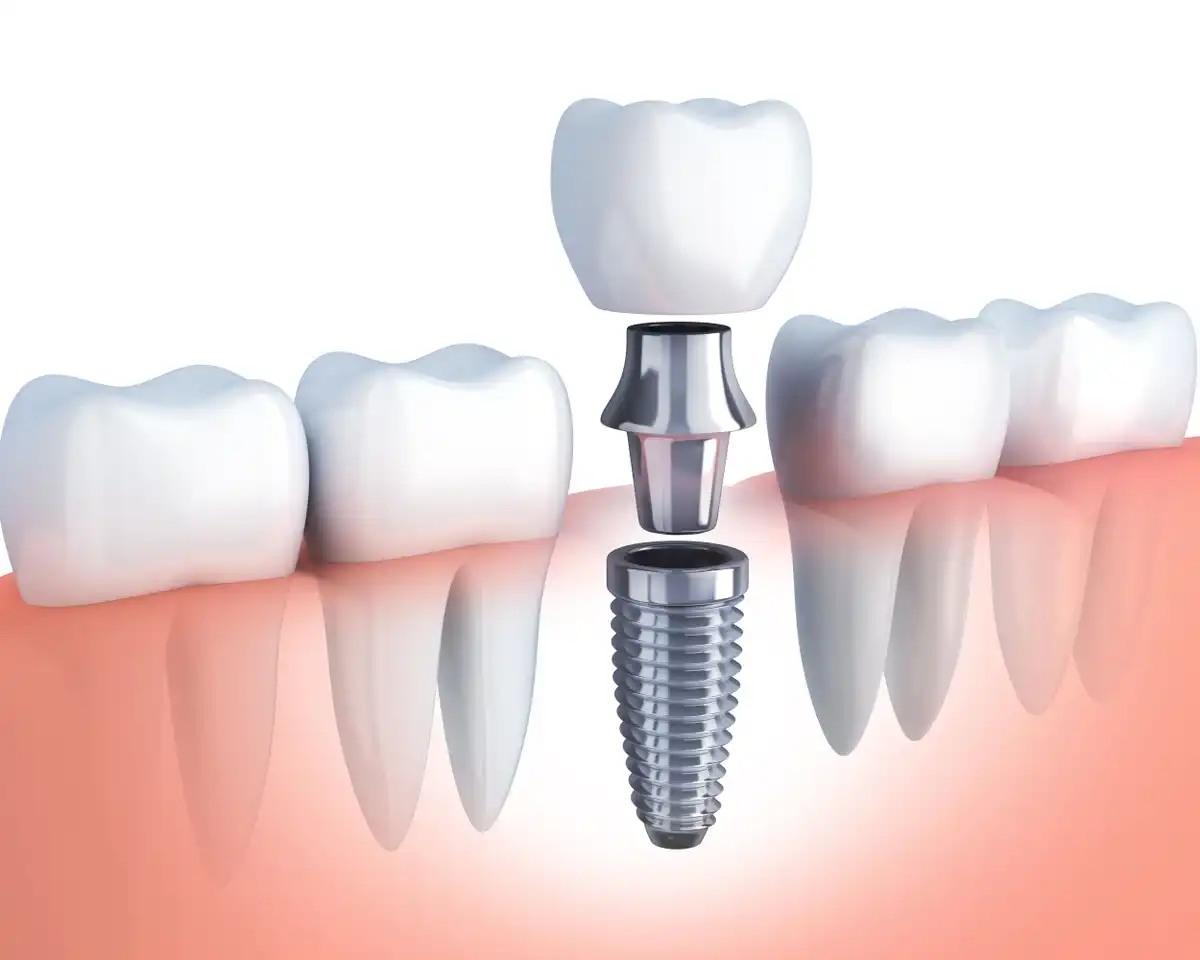
Dental implants are an exciting, modern dental treatment for people who need replacement teeth. But truth be told, a lot of people feel really nervous (or even completely scared) by the dental implant procedure. The great news is that once you understand the steps involved, you’ll see that dental implants are a safe, comfortable, and minimally invasive way to enhance your smile.
Here’s everything you need to know about the dental implant procedure so that you can feel confident talking to your dentist about this unique missing tooth solution.
What To Expect During Dental Implant Placement
Curious about implant dentistry and what’s involved in the dental implant procedure? Getting dental implants is surprisingly easier than most people think. Their minimally invasive nature makes the treatment experience a comfortable process that can be completed with just a small amount of local anesthesia. That being said, more complex dental implant procedures may require extra steps like a bone graft to ensure a successful outcome. If you don't have adequate bone for the dental implant placement, a bone graft will greatly increase the cost of the procedure. Knowing what you need (from bone grafts to sinus lifts) can help you feel prepared for the initial consultation.
What Are Dental Implants?
As you might guess, dental implants need to be paired with restorations like crowns, bridges, or hybrid dentures to top them off. Each restoration is handcrafted for optimal aesthetics, usually out of porcelain or some type of ceramic. Together, they work to restore your smile and erase the signs of missing teeth.
Dental implants are the only type of replacement teeth that’s non-invasive to surrounding teeth and helps strengthen your bone. Their design makes it possible to preserve natural tooth spacing, strengthen your jaws, maintain your normal diet, talk like normal, and smile with confidence.
How Do Dental Implants Work?
The shape of dental implants makes it so that we can install them directly into the bone, right alongside of natural tooth roots. They have a slightly ribbed texture and a material that attracts bone, triggering an integration process that causes a thin layer of new bone to attach directly to their surface. This process is what fuses the implant into your mouth and allows it to become a permanent prosthesis (similar to a joint replacement.)
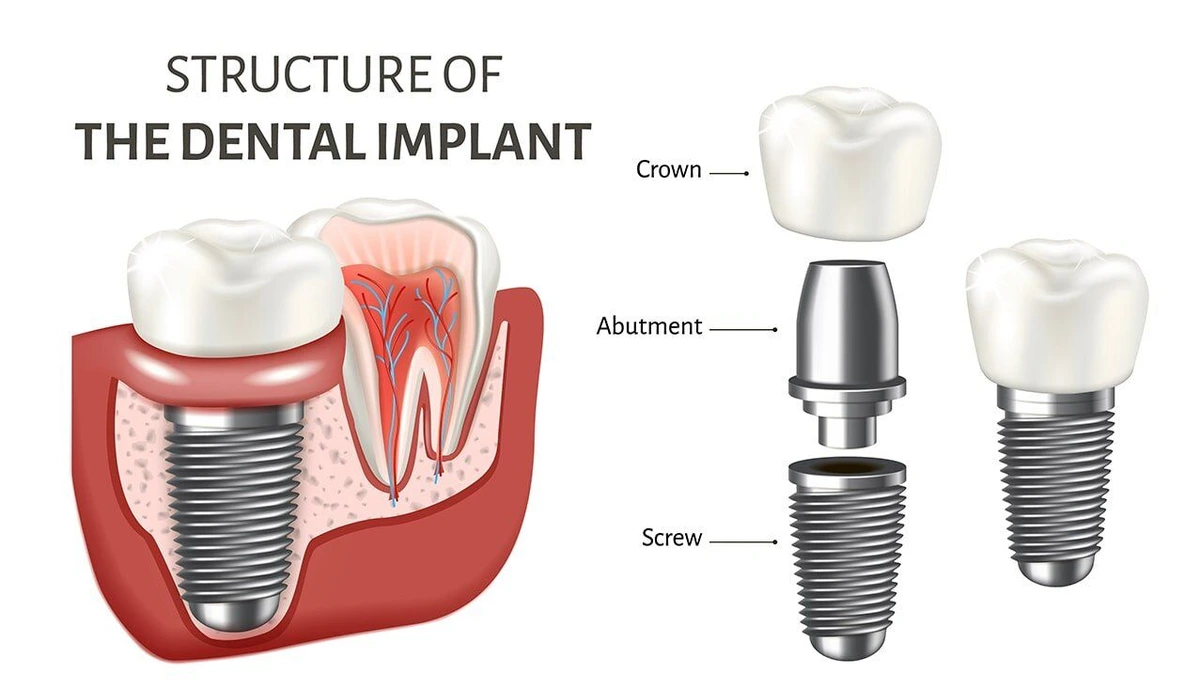
Although dental implants are frequently used for replacing individual teeth, they’re strong enough that they can work in pairs for replacement teeth. You don’t necessarily need an implant for each specific tooth that’s missing. Instead, they can be installed at specific points in your mouth to provide a stable foundation for longer dental bridges or hybrid appliances.
Dental Implant Parts Explained
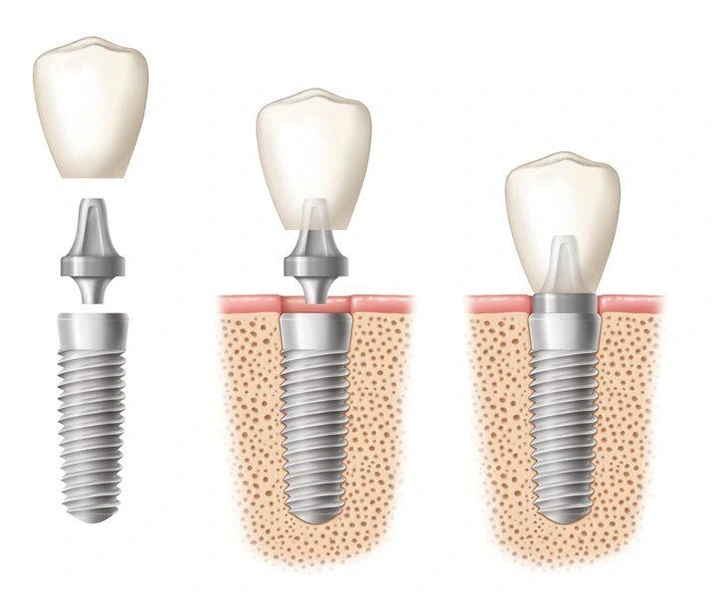
Like an anatomical tooth root, the implant has a rounded “apex” (tip of the “root”). Some also have a “crest module” design where the implant tapers upward at the top, near the abutment. This transitional type of shape is thought to help with load-bearing capabilities.
3 Types Of Dental Implants
A few decades ago, getting dental implants involved a complex surgical process, extensive framework and lengthy surgeries that made the treatment inaccessible to most people. Not only that, but the recovery process alone was extensive. Fortunately, that’s not the case anymore. Today, dental implant designs are more streamlined and easier to install, making them predictable and safe for most adults.
1) Endosteal Dental Implants:
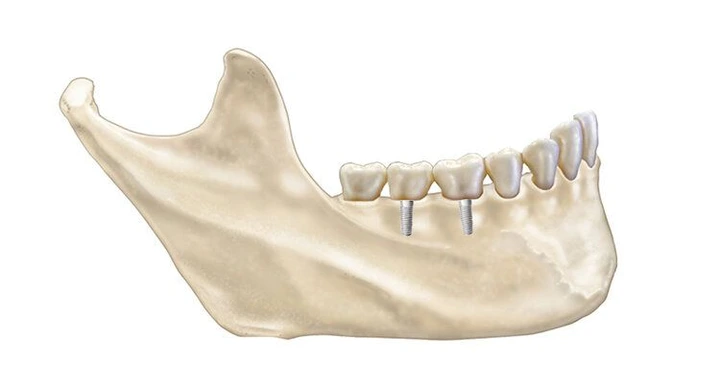
Most of the dental implants people get these days are cylinder shaped endosteal implants. The width and length of each one is about the same size or a little larger than a typical tooth. Endosteal implants are set directly down into a bony socket, like that of a normal tooth root. With a slightly rough, textured surface, their attractive surface makes it easy for bone fusion, integration, and long-term success.
2) Subperiosteal Dental Implants:
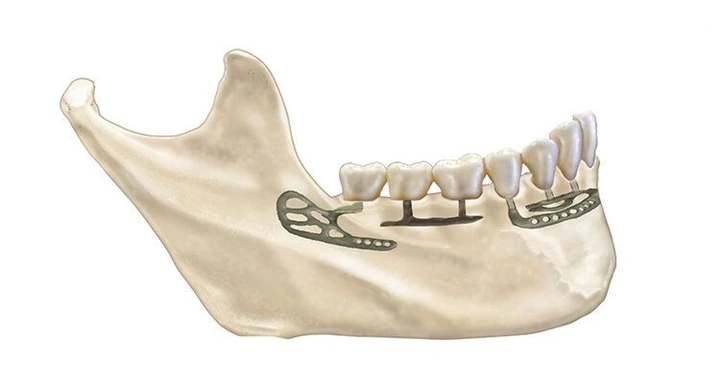
Do you have extensive bone loss in addition to missing most (or all) of your teeth? Then a subperiosteal system may be extremely beneficial. This metal framework is surgically installed below your gum tissues but on top of your bone. At specific points, protrusions that look like the tops of dental implants are set across the framework. Once installed, your dentist can then attach a full mouth prosthesis to restore all of your teeth at one time.
3) Mini Dental Implants:
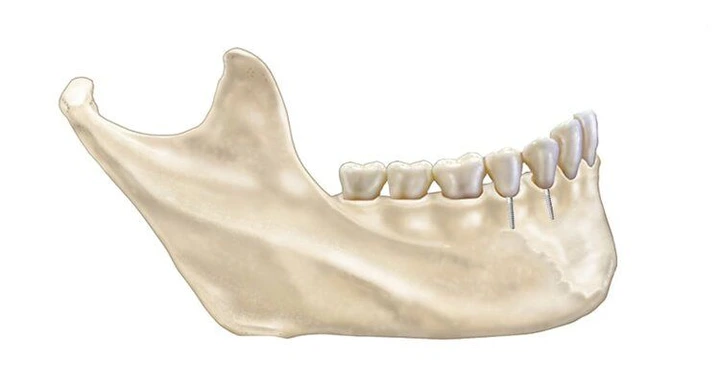
As the name suggests, “mini” dental implants are a smaller version of traditional endosteal implants. They’re approximately half the width and length of a normal dental implant, making them easier to place into tight spaces between teeth, or where bone is thinner. They can also be used to help secure removable overdentures. However, mini dental implants don’t provide the same extent of support, so they’re better for teeth that aren’t used as heavily (such as bottom front teeth.) Dentists have different opinions on mini dental implants, so be sure to be forthcoming with your provider about what you’re hoping to achieve.
Why Might You Need A Dental Implant?
Dental implants are quickly replacing traditional tooth restoration treatments like dental bridges, partial dentures, and full denture “plates”. Basically, any time you have a missing tooth, you probably want to consider getting a dental implant (or at least asking your dentist if you qualify for one.)
Here are some of the most common scenarios people encounter before talking to their dentist about getting dental implants:
Tooth Loss
Tooth Decay
Generally, we want to do everything we can to preserve and repair your natural teeth. So, if you have a cavity, it’s best to place a small filling in your tooth instead of extracting it to install a dental implant or artificial tooth. But if the decay is aggressive and there’s just not enough tooth left to restore, it’s probably better to have it pulled. At that point, a dental implant would be one of the best treatments to get your smile’s health back on track.
Periodontal Disease
Injury Or Trauma
Broken, cracked, and knocked-out teeth can sometimes be restored. Other times, they can’t. Instead of altering the teeth next to them to install a conventional bridge, the less invasive solution is to place a single dental implant and crown. The best part is that having an implant is as close as you can get to having natural teeth all over again. If a broken tooth needs to be extracted, it might even be possible to place the implant on the same day.
How To Prepare For The Procedure
Leading up to your dental implant procedure, your dentist or oral surgeon will need to thoroughly examine your mouth, take a series of X-rays, scans, or impressions, and talk about where the implants need to be installed. Some offices even use 3D scanning, making it possible to digitally place your dental implants before the treatment is ever planned. You’ll also discuss what you want your smile to look like.
Of course, financing is an important aspect of dental implant treatment. Your dentist’s office will tabulate your insurance coverage and any remaining portion that’s left over, then show you what’s available as far as a monthly payment plan. It’s completely normal to finance all or a portion of major dental procedures like full mouth reconstruction with dental implants.
Once you finally have all of the prep-work completed, you’re ready to schedule the actual dental implant surgery.
Step By Step Procedure
1) Implant Placement.
On the date of your dental implant procedure, you’ll have your mouth numbed like any other type of typical treatment visit. If you’ve elected to have sedation (like a lot of people do) you’ll probably feel as if you’re napping through the whole thing. Your dentist will then open a small slit in your gum tissue, create an opening in the underlying bone, and place the implant down into it. Once fully installed, the gums are closed over the installation site and allowed to heal.
If you’re getting multiple dental implants or a full-arch prosthesis, there’s a chance that you’ll receive some type of interim appliance during the same appointment (that way you don’t have to go without any teeth while your mouth heals.)
2) Integration Period.
Now we wait. It can take 3-6 months for your new dental implants to become completely integrated with your bone. If you rush this process, your dental implants could fail. Again, your dentist can arrange for you to have some type of a temporary crown or restoration to wear in the meantime.
3) Final Restoration.
Once everything is completely integrated, your dental implants are ready to support normal biting pressure. Your dentist will remove any interim restorations, slightly open the gum tissues immediately above your dental implants, and then attach an implant abutment. Remember, the abutment is the connecting piece between your implant body and the restoration that’s going to go on top of it. Usually, it screws directly into the top of the implant. Then your dentist will take another impression and have the lab design a permanent porcelain crown to go on top.
Side Note: Dental implant procedures vary between providers and how many replacement teeth are being replaced. Some types of prosthetics can be completed in a shorter timespan (like supported overdentures or mini dental implants) while others take more planning. Or you might need sinus lift surgery and bone grafts a few months prior to the implant installation. The above-mentioned steps are your “typical” step-by-step approach if you’re getting a single, traditional implant design. You’ll need to talk directly to your personal dentist about what the process will look like given your unique circumstances.
Post Procedure Recovery & Care
Your dental implant aftercare is extremely important, as it impacts the long-term success of your investment. Follow your home care instructions carefully, especially in the days immediately after your implant installation.
Essentially you want to treat your dental implants the same way you would natural teeth. Just like your natural teeth, dental implants require that you brush them twice a day. Floss daily. Don’t use them as tools to open up packages. And schedule a dental cleaning at least every six months.
In the early weeks, while your dental implants are still integrating, your dentist may have you wear an interim prosthesis or stick to soft foods. Being gentle on your dental implants during the healing process will ensure that they fuse in place properly. Within a few months, they’ll be stronger than your natural teeth.
It’s crucial that you keep the gums around your dental implants clean and healthy. Like gingivitis, peri-implantitis is a type of infection that can compromise the integrity of your implant. Without good oral hygiene, your implant could fail. I highly recommend investing in both an electric toothbrush as well as a water flosser to use on an everyday basis.
Are Dental Implants Painful?
No. Even though we would never claim that a dental treatment is completely pain-free, dental implants come close. Their minimally invasive nature combined with the fact that you don’t have pain receptors in your bone mean they’re way more comfortable to get than a lot of people assume they are. Really the only thing you can expect to feel is a little tenderness on your gums where a slight opening is made. Fortunately, gums heal quickly. Local anesthesia can numb the installation site and is more than enough to keep you comfortable for a traditional single-implant installation.
While we’re on the topic of whether dental implants are painful or not, it’s important to note that a lot of people prefer to have some type of sedation during their placement procedure. Even though getting dental implant surgery doesn’t hurt, the majority of people want to tune everything out or not think about what’s going on during the appointment. Sounds, pressure, or other stimuli can be bothersome to certain patients. And if you’re getting multiple dental implants on the same day or also need extractions, it can just be easier to have sedation and get it all over with at once. When you’re comfortable and sedated, your dentist or implant specialist can work more efficiently.
Risk Factor With Dental Implants
It’s a general rule of thumb that dental implant procedures have about a 98% success rate. That means your risk of something going wrong with your new dental implants is extremely low. In fact, it’s lower than other basic types of dental work.
- All of that being said, there are some specific risk factors or complications that could jeopardize your implant treatment, such as:
- Peri-implantitis developing around your new implant, causing bone loss, tissue detachment, and overall implant failure.
- A ruptured nasal sinus lining, if sinus lift surgery was not successfully completed or failed to heal correctly.
- Specific medical conditions or medications that you’re taking, which interfere with blood clotting, bone health, or typical healing times.
- Not being old enough for dental implants, in that your oral anatomy has not already completely developed.
- Existing gum disease or other untreated dental infections.
- Failing to wait long enough for full osseointegration to occur, weakening the overall implant.
- Not performing bone grafting when required.
Dental Implant FAQs
How Long Do Dental Implants Last?
Dental implants have the longest life expectancy out of any modern-day dental restoration. Generally speaking, it’s fair to say that implants can last several decades or even the entire lifetime of the patient who is getting them. Today’s implants have a success rate of 98%.
However…dental implants can fail if they’re placed improperly, not cared for, or you develop peri-implantitis around them. The skill and experience of your dental provider (plus the technology they have on hand) as well as your home care habits both play a role in how long your implants last.
How Much Are Dental Implants?
Everyone wants to know how much dental implants cost. But that’s a tricky question to answer, because the actual cost of treatment is impacted by a plethora of circumstances, like:
- How many implants you need (not necessarily how many natural teeth are missing)
- The type of restoration you’re getting placed on top of your implant
- If you need any bone grafting, sinus surgery, or other supportive procedures
- If you want to have sedation during the dental implant procedure
- Whether or not you have dental insurance and how much your plan covers
- If you have existing teeth that need to be extracted beforehand
A single dental implant can cost $2,000-$5,000. This cost includes dental implant surgery for the implant placement, all the components, and the implant crown. But there are so many variables to keep in mind that it’s impossible for your dentist to quote an implant price over the phone.
Single Dental Implant Average Cost
| Single Implant | Average Cost |
|---|---|
| Dental Implant | $1,500 to $2,500 |
| Implant + Procedure | $3,000 to $5,000 |
Does Insurance Cover Dental Implants?
Yes. In the past, a lot of dental insurance plans rejected dental implant surgery. That’s not the case anymore. Since dental implants have evolved in design, technique, and success, they’re now seen as the gold standard for replacing a missing tooth. Fortunately, dental insurance plans have begun to adapt their policies to cover implant therapy.
Just keep in mind that every dental insurance policy has its own deductibles, maximum annual allowable amounts, and tiers of coverage for different treatment categories. You’ll need your dentist to run a verification first and then give you an estimated treatment plan with the specific costs involved. Every person and plan are different.
Are Dental Implants Safe?
Dental implants are extremely safe. First off, most implants are made out of the same titanium material that you see in joint replacement procedures. Titanium is biocompatible, hypoallergenic, and triggers an “osseointegration” process where your bone is actually attracted to them (allowing them to fuse into place.)
What about the dental implant procedure itself? Most people say that it’s actually easier to get a dental implant placement than it is to have a tooth pulled. In reality, you really only need local anesthesia (numbing medication) to place them in most cases. Of course, there will always be exceptions — like when you need a sinus lift — so be sure to talk to your dentist directly.
Dental Implants Recap
Are you thinking about getting dental implants? The dental implant procedure is way less stressful than most people think it will be. Their design, minimally invasive nature, and versatility makes getting dental implants a no brainer if you have missing teeth. Prepping for the straightforward procedure is easy once you realize how comfortable it can actually be and the time that’s required. Plus, they’re extremely safe and can last a lifetime. Chances are you’ll wish you had gotten them earlier!

Make your inbox smile!
Subscribe






